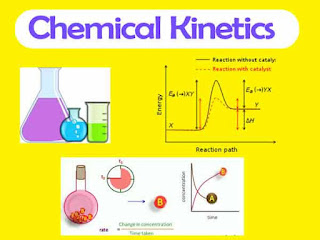Chemical kinetics us to understand how chemical reactions occur.
Chimestry, by its very nature, is concerned with change. Substances with well defined properties are converted by chemical reactions into other substances with different properties.
For any chemical reaction, chemists try to find out
- The feasibility of a chemical reaction which can be predicted by thermodynamics (as you know that a reaction with ΔG く0, at constant temperature and pressure is feasible);
- Extent to which a reaction will proceed can be determined from chemical equilibrium;
- Speed of a reaction i.e time taken by a reaction to reach equilibrium.
For example, which parameters determine as to how rapidly food gets spolied? How to design a rapidly setting meterial for dental filling?
Or what controls the rate at which fuel burns in an auto engine? All these questions can be answered by the branch of chemistry, which deals with the study of reaction rates and their mechanisms, called chemical kinetics.
The word kinetics is derived from the Greek word kinesis meaning movement. Thermodynamics tells only about the feasibility of a reaction whereas chemical kinetics tells about the rate of a reaction.
For example, thermodynamics data indicate that diamond shall convert to graphite but in reality the conversion rate is so slow that the change is not perceptible at all.
Therefore most people think that diamond is forever. Kinetics studies not only help us to determine the speed or rate of a chemical reaction but also describe the condition by which the reaction rates can be altered.
The factors such as concentration, temperature, pressure and catalysis affect the rate of a reaction. At the macroscopic level, we are interested in amounts reacted or formed and the rates of their consumption or formation.
At the molecular level, the reaction mechanism involving orientation and energy of molecules undergoing collisions are discussed.
In this article, we shall be be dealing with avert and instantaneous rate of reaction and the factors affecting these. Some elementary ideas about the colli theory of reaction rates are also given.










